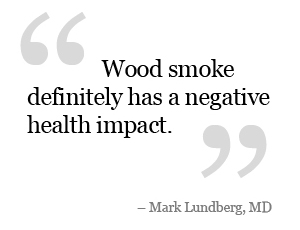Beyond Particulates: Toxins in Wood Smoke
In many areas, wood burning is the largest single source of particle pollution in winter months.
But what about toxic compounds?
A recent study by the Australian EPA sheds some light on this topic, and it’s an eye opener. For example, look at formaldehyde, which is a potent irritant and carcinogen. The study found that in the Sydney region, 38% of the formaldehyde in the air is generated by residential wood heaters.
Another example is polycyclic aromatic hydrocarbons (PAHs), which also cause cancer: 35% comes from wood burning.
Perhaps most frightening is the data for dioxins and furans, which are some of the most toxic compounds known to man–39% is generated by wood burning.
These numbers are even more troubling when you consider that they are annual figures and that wood burning in the Sydney area takes place for only about a third of the year. During the winter months, residential wood heaters likely account for more than 50% of these toxic compounds in the air.
Before you breathe a sigh of relief that you are not living Down Under, bear in mind that wood burning activity in the Sydney area is not any worse than in many areas in the United States and around the globe.
To date, attention has focused mainly on wood burning as a source of particle pollution. This study makes it clear that wood burning’s role as a source of toxic and carcinogenic compounds may pose an even greater threat to human health and to the environment.




